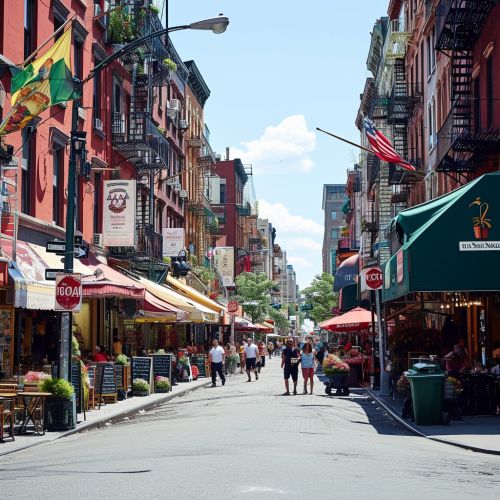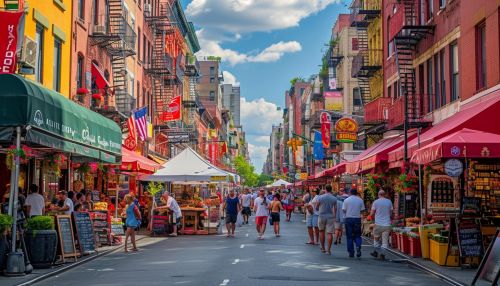Little Italy, Manhattan
History
Little Italy, Manhattan, has a rich and vibrant history that dates back to the late 19th century. It was during this period that a large influx of Italian immigrants began to settle in the area, transforming it into a bustling Italian neighborhood. The area was originally part of the Lower East Side, but as more Italians moved in, it quickly became known as Little Italy.
The neighborhood was characterized by its tight-knit community, with many families living in close proximity to each other. This sense of community was further reinforced by the many Italian businesses that sprouted up, including bakeries, butcher shops, and restaurants. These establishments not only catered to the Italian community but also attracted visitors from other parts of the city.
By the early 20th century, Little Italy was home to over 10,000 Italian immigrants, making it one of the largest Italian neighborhoods in New York City. However, the neighborhood began to change in the mid-20th century as many Italian families moved to other parts of the city or to the suburbs. Despite these changes, Little Italy has managed to retain its unique character and continues to be a popular destination for both locals and tourists.


Geography
Little Italy is located in the southern part of Manhattan, bounded by Houston Street to the north, the Bowery to the east, Canal Street to the south, and Lafayette Street to the west. The neighborhood is adjacent to other notable Manhattan neighborhoods, including Chinatown to the south and Soho to the north.
The neighborhood is characterized by its narrow streets and historic buildings, many of which date back to the late 19th and early 20th centuries. Despite its small size, Little Italy is densely populated, with a high concentration of restaurants, shops, and residential buildings.
Culture
The culture of Little Italy is deeply rooted in its Italian heritage. This is evident in the neighborhood's many Italian restaurants, bakeries, and shops, which continue to serve traditional Italian goods. The neighborhood is also home to several Italian-American organizations, including the Italian-American Museum, which is dedicated to preserving the history and culture of Italian-Americans.
One of the most notable cultural events in Little Italy is the annual Feast of San Gennaro, a religious festival that celebrates the patron saint of Naples. The festival, which takes place in September, features a grand procession, live music, and a variety of Italian food and drink.
Economy
The economy of Little Italy is largely driven by its tourism industry. The neighborhood's Italian restaurants, shops, and cultural events attract visitors from around the world. In addition to tourism, Little Italy also has a thriving retail sector, with a variety of boutiques and specialty stores.
Despite the neighborhood's small size, it has a significant economic impact on the city. According to a study by the New York City Economic Development Corporation, Little Italy generates over $300 million in annual economic activity.
Demographics
While Little Italy was once predominantly Italian, the neighborhood has become more diverse in recent years. According to the latest census data, the neighborhood is now home to a mix of Italian, Chinese, and Hispanic residents, among others.
Despite this diversity, the neighborhood continues to maintain its Italian character, with Italian being the second most commonly spoken language after English. Additionally, many residents of Italian descent continue to live in the neighborhood, contributing to its unique cultural identity.
